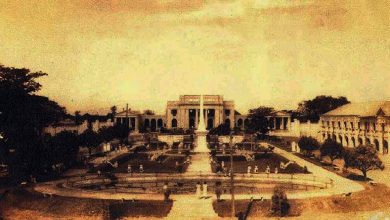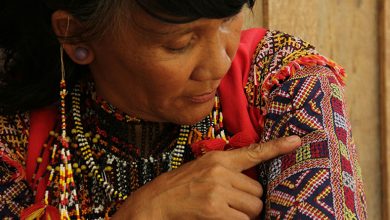Language
There are more than 89 languages and 122 dialects in the Philippines; but only eight languages can be regarded as of major importance in terms of the number of people who speak them – Ilocano, Pangasinan, Pampangan, Cebuano, Bicol, Waray, Hiligaynon and Tagalog. The most important of these is Tagalog, which is spoken in the Manila area. All these languages, though in some, respects very different from one another, are of the Malaya-Polynesian (i.e. Austronesian) family.
Under the 1973 constitution there are three official languages Filipino, English and Spanish. The language most used in administration is English, although increasing numbers of documents are now being written in Filipino; Spanish is now employed only in certain special situations. Filipino has the grammatical structure of Tagalog and a vocabulary enriched by terms borrowed both from other local languages and from foreign languages. The adoption of this language, with its distinctively national name, is evidently designed to promote linguistic unity and gloss over the fact that it has hitherto been spoken only in a restricted area. The National Assembly is to take measures for its development. All three languages are required to be taught: English at all levels, Filipino in primary and secondary schools, Spanish at university level. The 1973 Constitution dropped the Spanish and retained English and Filipino as the official languages of the country. The present constitution, ratified in 1987, stated that Filipino and English are both the official languages of the country.
According to the census dated 1975, 55% of the population then spoke Filipino, but only 37% had full command of the language as their mother tongue. The proportion is expected to reach 82% in 25 years. The use of Filipino is becoming increasingly general in Manila.
The Filipinos thus speak several languages in everyday life, particularly in Manila, where a husband and wife will often come from different linguistic regions. Although the study of Spanish is obligatory it is spoken regularly only in a small number of families, usually mestizos with Spanish blood. In families where the normal language is English it is rarely spoken in pure form, but incorporates many Tagalog expressions and exclamations. This is what is familiarly known as Taglish, the language used also by the information media, radio and television. Conversely, although the younger generations in Manila like to talk Tagalog among themselves this incorporates many English words and expressions. In many fields there is no Tagalog word, or if there is it may not be known to the speaker. It is significant that in Manila most of the signs and inscriptions in the streets are in English, even though the spelling may sometimes be a little unorthodox. A complete and classical form of Tagalog is spoken only in its original area of distribution.
The languages of the Philippines can be divided into three main groups, corresponding to successive waves of incomers to the archipelago. The first group is the Northern Philippine languages. These are thought to have settled on the island of Luzon before moving farther north into Formosa; among the languages belonging to this group are lfugao, Igorot and Kalinga (all in the Mountain Province), Pangasinan and Sambal (Zambales), and Kapampangan (Pampanga). These languages are believed to have split off around 700 B.C; the second breakaway is thought to have taken place in the 1st century B.C. The Meso Philippine languages; the principal languages of this group are Tagalog, Bicol, Bisaya (Visayas), Tausug and the Manyan languages; lastly, the Southern Philippine languages, the third group belong the languages of Mindanao, those spoken by the Manobos and tribes which are now Muslim. All these languages are spoken in the centre of the archipelago. The Manobo languages mainly in central Mindanao and the languages of the tribes converted to Islam in the rest of Mindanao and the Sulu archipelago (Magindanao, Maranao, Tausug).
The similarities and differences between the various languages can be seen by comparing the words for parents: Ilocano, am-amma; Tagalog, magulang; Bukidnon, manga laa; Kalingga, danakkel; Bicol, magurang; Maranao, manga lakes; Pampangan, pengari; Cebuano, amahan; Magindanao, manga; Pangasinan, ateng; Tausug, manga maas lukes.
Filipino owes some of its vocabulary to strong influences from neighbouring cultures. Chinese influence, dating back to the first millennium, is reflected in more than 500 words taken over from the Chinese language. Something like a hundred roots of Sanskrit origin, no doubt introduced through the intermediary of the powerful Malaysian kingdom of Srivijaya. Spanish has contributed a very large number of words and expressions; when used in their original sense (and this is not always the case) they usually suffer changes in spelling or in syntax: thus the Spanish word seguro (sure) takes on an exactly opposite meaning and expresses uncertainty, the figure 4 (quatro) becomes kuwatro, and so on. In practice, however, either Tagalog, Spanish or English numbers can be used.
The main Tagalog-speaking areas were Nueva Ecija, Bulacan, Rizal (the province immediately east of the capital), Cavite, Laguna, Batangas, Quezon, Camarines Norte and Camarines Sur (northern part only), the island of Marinduque and part of Mindoro. It can be seen that these areas represent only a small part of the country’s total area.
The Philippines do not seem to have had any written language until the 10th or 11th century, when an alphabet was brought in from Sumatra. The Spaniards took a lively interest in the local languages and devoted much effort to studying them. A number of Spanish writers expressed admiration for the Tagalog language and its alphabet, noting at the same time that almost the whole population, particularly in the Manila area, was illiterate. Originally the Spanish authorities contemplated making Tagalog the vernacular language of the Philippines, but it soon became the policy to impose Spanish. A census carried out by the Americans in 1905, however, showed that only 10% of the population spoke Spanish at that date.
Tagalog is an archaic Malaysian language; it is a highly structured language which has shown no development in the direction of simplification. Spanish influence has led to the adoption of the Latin alphabet. A distinctive feature of Tagalog is its use of affixes prefixes and sometimes infixes and suffixes which are added to the root of the word and declined or conjugated to convey the maximum amount of information. Thus in the word “makipagdamayan” which means a person who receives sympathy from someone else, the root is “damay”, “pag…an” makes the root a substantive and “maki” expresses reciprocity. The affixes can also be used to emphasize a particular element in a sentence the agent, the object, direction or location, the instrument, the beneficiary.




